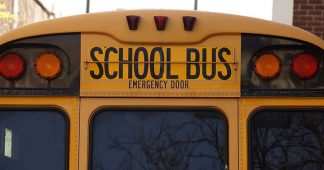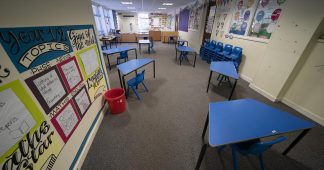A large study from Austria shows that SARS-CoV-2 infects just as many schoolchildren as it does teachers. Other surveys indicate that while young children may show no symptoms, they are quite efficient at spreading the virus
By Rafaela von Bredow
If you’ve ever heard teenagers chattering away and laughing during the breaks, or seen them crowd into a supermarket; if you’ve ever experienced the chaotic running and roughhousing of schoolchildren at recess – you might be surprised that things have gone so comparatively well at schools during the coronavirus pandemic.
As recently as the end of October, the science journal Nature published a data survey that came to an apparently reassuring conclusion: “Data gathered worldwide are increasingly suggesting that schools are not hot spots for coronavirus infections,” and further, that schools could “reopen safely when community transmission is low.”
That, though, has since changed.
Such “community transmission” has become quite high in many parts of Germany and the effect of the current “lockdown light” has been disappointingly minimal. Case numbers have stagnated at a high level, while in some regions they have continued climbing at an alarming rate. What are the reasons? Where are people contracting the infections? Is transmission only occurring in shops, which have remained open this fall in contrast to the spring lockdown? Or is transmission actually transpiring in schools, after all?
Because of the persistently high number of cases, the National Academy of Sciences Leopoldina has this week called for a strict lockdown before Christmas – including the closure of schools as quickly as possible. Chancellor Angela Merkel likewise pleaded with the state governors to send children into the Christmas break early and extend the holidays.
From the perspective of epidemiologists, that would, indeed, be a sensible move. Evidence is provided by a still unpublished analysis of a widespread testing campaign at schools in Austria, which found that SARS-CoV-2 affects just as many students as teachers.
“Schools are not islands of serenity,” says study leader Michael Wagner, a professor of microbiology at the University of Vienna. Leaving them open is “a significant risk.” He argues, though, that such closures should be accompanied by “honest communication about the effects it would have on the development of infections” and that it will only work “if the rest of the population does its part by avoiding many activities with a higher risk of infection.”
Read more at www.spiegel.de











